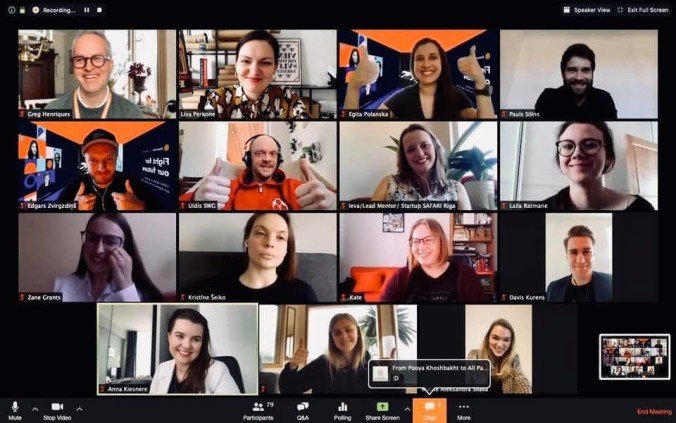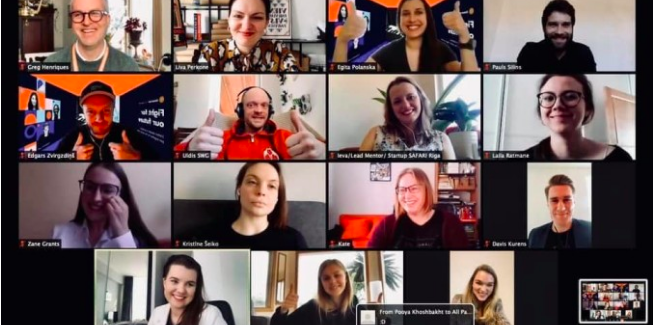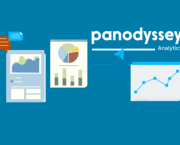
I love hackathons because they are very creative, fast, confusing and overwhelming. It is a messy collaborative space for co-creation—where ideas spark and like-minded people come together in rapid experimentation-mode and produce in 48 hours or less highly innovative solutions.
We just completed with the absolutely amazing support of more than 500 volunteers the EUvsVirus hackathon which brought together more than 20,000 participants and produced more than 2,000 projects.
The German WirvsVirus hackathon was truly impressive by attracting more than 42,000 participants, generating more than 1,900 projects and putting in place a support program for the most innovative 150 hackathon solutions.
In the GlobalHack, more than 12,000 participants from 100 countries demonstrated awesome commitment, passion and solidarity, contributing their individual knowledge and skills collectively towards a common goal—finding and accelerating more than 1000 innovative solutions to fight the Covid-19.
The fascination with hackathon- bringing like-minded people together from around the world
People from different countries, backgrounds and professions who would have otherwise never met, came together and coalesced through the magnetic calling power of a common interest. In our nine-person team, I worked with a recent MBA graduate from Peru who was living in London, a deeply passionate South African husband and wife team, who channeled in ying-yang equilibrium their polar-opposite interests (he is a banker and she is an anthropologist), a cyber-security expert from Brazil, a senior finance expert from Kansas, a bachelor computer student from the Bay Area, a recent US-returnee and business student from Kazakhstan, and a CEO of a blockchain foundation in Australia. All of us quickly gelled and channeled our dedication and best skills towards building our prototype—an application that facilitates the purchase of vouchers and gift-certificates to support local restaurants, mom & pop shops and micro-businesses.
The dizzying speed of the forty-eight-hour deadline creates a Tasmanian-devil frenzy and an intent razor-sharp focus on developing and creating the solution itself. It is a pragmatist’s utopia where the actions of all team-members snowball and ultimately fall together to shape the prototype and solve a puzzle, identified a mere two days earlier.
The process is not only swift and accelerated, but also highly democratic and friction-less. The Slack platform provides for an easy, smooth interaction where all participants, in our case all 12,000 could directly and fluidly interact with one another.
The most difficult part of the hackathon is the beginning—coalescing around a common project and forming your team. This initial chaos in matchmaking can be a bit disorienting. In pulling together my team I used different strategies—reading through short bios (3-4 sentences) and connecting with those who had “liked” my concept proposal posted in Devpost. This initial part, can feel a bit like swimming upstream, given that some teams may have an unfair advantage, and have formed prior to the start of the hackathon. Additionally, others join the hackathon, to present previously developed applications and are more concerned about selling their ideas, than in the ideation process itself—which points to the continuous commitment by teams in further developing their projects and the need for follow-up in the aftermath of hackathon events.
Beyond the organizational creative chaos, a structural challenge inherent in the hackathon is the question of sustainability. Given the high-level of energy concentrated in a 48-hour period, which then gives way to a prototype and project—what comes next? Firstly, the Hackathon is a competition which culminates in the selection of winners. Of the 1000 prototype submissions provided by the 12,000 GlobalHack participants, across ten broad categories (Arts, Creativity, Media and Entertainment, Crisis Response, Education, Empowerment and Solidarity in Action, Environment, Governance, Media and Entertainment, Mental Health, Work, Economy and Health & Wellness), there were 30 winners—top 3 selections under each category. From these 30, three overall winners were then selected. Each winning team was awarded between 5,000 – 10,000 Euros, and the top three were doubled their initial award.
But beyond winning hackathons—what happens to the ideas and prototypes presented? For hackathons to have a sustainable impact, it is critical to follow-up and provide continuous support and hand-holding to the teams that presented the most innovative and viable prototypes, enabling them to accelerate their developed solutions, scale them up and find rapid pathways to take them to the market. Hence, I suggest organizing a Matchathon and continuous follow-up support to keep firing up the innovations. Here are my ideas on what a Matchathon is and how it can build on the great success of the existing Hackathons.
The Matchathon: taking hackathons to the next level
The European Commission would facilitate the organization of a ‘Matchathon’ in partnership with the volunteer community and Hackathon organiserss. Based on the interest and support from the hackathon community, The Machathon would provide follow-up support to hackathon teams and the most innovative solutions developed during the GlobalHack, the EUvsvVrus, and national hackathons, such as WirvsVirus who joined the fight against the Covid-19. Here is a list of ideas of activities to be carried out through the Matchathon. I would love to get your feedback on this and have your ideas what would be the most important activities to be included:
· a virtual matchmaking event that brings together the most innovative hackathon teams with investors;
· facilitating synergies and collaboration between like-minded hackathon teams;
· enhancing project investment-readiness by providing coaching sessions with experts and startup CEOs on finance, business planning, product development, marketing and venture building;
· sharing more broadly the menu and facilitating access to EU-supported programs that enable the acceleration of innovative solutions and startups;
· closing the feedback loop between ideation and policy making by directly connecting hackathon teams with policy makers.
Importantly, the Matchathon aims to close the feedback loop between ideation and policy making—in a seamless connection that enables hackathon teams to receive real-time feedback from policy makers, while providing policy-makers with a fresh inventory of new out-of-the-box ideas to tackle policy challenges. Finally, it takes the aftermath of the hackathon, which leaves many participants with questions on as to how to take their solution to the next level and provides that just-in-time follow-up support that enhances projects’ marketability and investment-readiness, including an implementation toolkit on how to navigate the relevant national and multi-national regulatory environment. Thus, keeping the hackathon community and all of us all fired up so we have a real impact on addressing the challenges of the Covid-19 crisis !
Please send me your feedback of comments also on twitter: @bgigler









 English
English
 Français
Français
 Deutsch
Deutsch
 Italiano
Italiano
 Español
Español


 8 min
8 min

 Beitragen
Beitragen








 Du kannst deine Lieblingsautoren unterstützen
Du kannst deine Lieblingsautoren unterstützen





